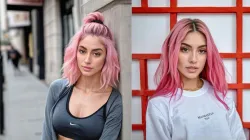How are AI-generated influencers stealing businesses from human content creators?
Lopez, a character brought to life by a generative AI, boasts distinctive pink hair and has seamlessly transitioned into the realm of virtual influence. With 200,000 individuals on various social media platforms, this virtual influencer has become a digital sensation.

Generative AI-created virtual influencers are trending over the period and it is now stealing business from human content creators. As the big brands are embracing AI avatars to promote their products on social media, these AI-created influencers have been attracting so many people.
Virtual influencers have been created by using artificial intelligence (AI) tools, and have broken into the growing $21 billion content creator economy, reports The Financial Times.
"We were taken aback by the skyrocketing rates influencers charge nowadays. That got us thinking, 'What if we just create our own influencer?' " said Diana Nunez, co-founder of the ad agency called The Clueless.
Nunez created Aitana Lopez and the "rest is history".
Lopez, a character brought to life by a generative AI, boasts distinctive pink hair and has seamlessly transitioned into the realm of virtual influence. With an impressive following exceeding 200,000 individuals on various social media platforms, this virtual influencer has become a digital sensation.
In the realm of virtual influence, Lopez has transcended mere existence to become a lucrative entity. Earning a substantial monthly income of over Rs 9 lakh, this AI-generated personality has successfully carved out a niche in the competitive world of social media, captivating the attention and admiration of a diverse and substantial audience.
"Brands have paid about $1,000 a post for her to promote their products on social media -- despite the fact that she is entirely fictional," the report noted.
The Clueless has another creation in development, which it calls a "curvy Mexican" named Laila.
In recent years, a notable trend has emerged in the collaboration between prestigious luxury brands and virtual influencers. Examples include the partnership between Kim Kardashian's makeup line, KKW Beauty, and the virtual influencer Noonoouri, as well as the association of Louis Vuitton with the virtual personality Ayayi. These collaborations underscore a dynamic shift in marketing strategies, where cutting-edge virtual personalities contribute to the promotion and success of esteemed luxury brands in the digital landscape.
According to the report, a Meta ad analysis revealed that the cost per person for ad recall was 91% more economical when H&M utilized virtual models.
An Instagram analysis of an H&M advertisement featuring the virtual influencer Kuki revealed that it reached an audience 11 times larger and achieved a remarkable 91% reduction in the cost per person for ad recall compared to a conventional ad. The report highlights the swift adoption of virtual influencers by brands as an innovative approach to garner attention while cutting costs.
Illustrating this trend further, the virtual influencer Lil Miquela commands fees reaching thousands of dollars for product promotion. Lil Miquela has successfully collaborated with prestigious brands such as Burberry, Prada, and Givenchy, amassing an impressive following of nearly 3 million followers. This showcases the growing impact and profitability of virtual influencers in contemporary brand partnerships.
ALSO READ: Google Doodle welcomes 2024 with a glittering celebration | Details
Inputs from IANS